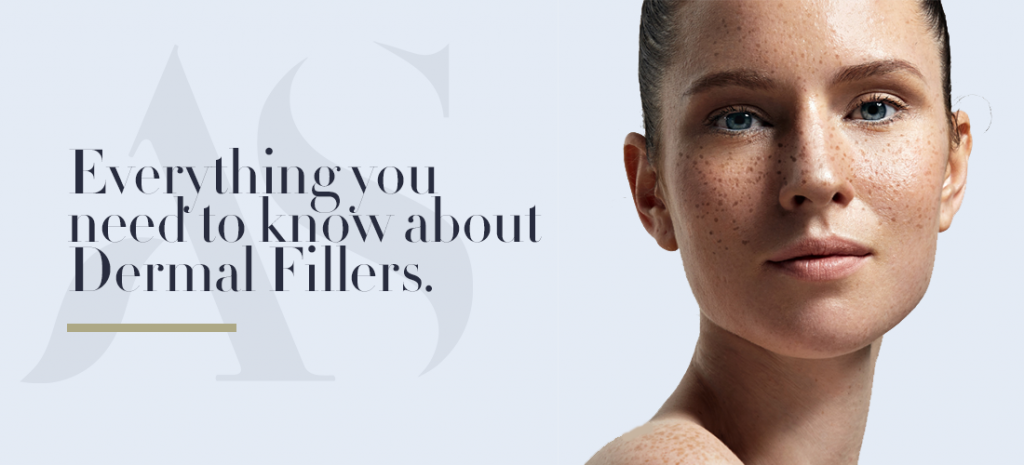Dermal fillers are volumising gels that can be used to restore lost volume, add volume in areas of natural deficiency and reshape facial features.
Dermal fillers are temporary and reversible. Longevity is said to be between 6 and 18 months depending on the product type and personal biological characteristics that cannot be predicted or controlled. Despite this, it is generally accepted that the longevity of fillers is unpredictable. Rarely, they may be metabolised by the body in only a few months. More frequently, fillers are seen to last many years (as evidenced by MRI studies of the face performed years after dermal filler injection).
Dermal Fillers Considerations
Longevity is an important consideration when deciding whether or not to undergo dermal filler treatment. It is critical to appreciate that filler longevity cannot be guaranteed, and you must make your decision based on probability of longevity. Many people who claim that filler doesn’t last on them fail to appreciate the following key considerations:
- Lack of visible effect does not mean that the filler is not still present;
- Initial swelling may give the appearance of a more pronounced result, that once settled leaves you feeling underwhelmed, or ailing to see an appreciable difference (people are generally quick to forget how they appeared before a treatment);
- Fillers can migrate to other areas of the face (generally when higher volumes are used more frequently);
- People age over the top of their fillers (the effect isn’t wearing off, rather your facial tissues have continued to age).
Dermal fillers can be immediately reversed by injecting a dissolving enzyme. Reversing dermal filler is generally done in cases where a complication has occurred, or if the results are not satisfactory, or when they are no longer desired. Reversing dermal filler is safe, but can cause bruising and swelling. There is also a rare risk of severe allergic reactions. Accordingly, reversing dermal filler should only be performed when absolutely necessary.
Types of Dermal Fillers
There are many types of HA dermal fillers available. They differ in specific rheological and other properties. Each type of HA has its own unique combination of properties that should be taken into account when selecting that particular HA gel for use. The key properties of HA dermal fillers are:
- Cross-linking: (how entangled the gel particles are);
- Hygroscopicity: (how much water volume the gel can hold);
- Monophasic or biphasic: (mono – all filler particles in the gel are the same; biphasic – the gel contains two different types of filler particles);
- Filler concentration: (how much filler molecule is present in a given quantity of the gel);
- Viscoelasticity (G’ or G-prime): (how resistant the gel is to a change in its shape, and its propensity to spring back to its original shape after any force or pressure applied to it has ceased);
- Cohesivity: (the degree at which the gel will tend to stick together, and not break apart. Related to cross-linking).
Longevity and ‘thickness’ are not true measures of dermal fillers, and should not be used when considering which type of HA gel is appropriate for a treatment. Using a gel based on these properties can lead to the injection of the wrong gel for the treatment goal, increasing the risk of firm lumps that need to be reversed (this is especially true when it comes to lip filler procedures).
Dermal Fillers Risks
HA dermal fillers are very safe, owing in part due to their reversibility. Risks of dermal filler injections include:
- Bruising;
- Swelling;
- Redness and local tenderness;
- Mild and temporary headache;
- Infections;
- Nodules (firm lumps);
- Foreign body reactions including granulomas (where the body identifies the filler as foreign material and reacts to it, forming local swelling, redness, pain and scar tissue)
- Allergic reactions;
- Over or under correction;
- Asymmetry;
- Lumps (possibly due to over injection of filler);
- Loss of vision (extremely rare));
- Stroke (extremely rare);
- Skin ischaemia and necrosis (if ischaemia is not treated in a timely manner): this occurs if blood flow is blocked by dermal filler and the skin is no longer receiving its blood supply.
Certain areas of the face have different risk profiles regarding the likelihood of a complication. Ensuring that you are treated by someone with extensive experience is the best way to minimise a risk. It is impossible to eliminate the risks of a procedure, and you must accept them before deciding whether or not to proceed with treatment.
Dermal fillers typically come in syringes of 1ml. Some types come with slightly more or less. The total quantity of dermal filler is not as important as the type and application of the dermal filler. Using smaller quantities is always preferable, as adding more is easier and more predictable than reversing filler that has been overdone. Finally, it is critical to appreciate that certain areas of the face can only fit so much dermal filler before they become overstretched. Over-stretching of facial tissue can cause gradual migration due to the elastic properties of the facial tissue. This is most commonly seen with lip fillers.
A guide to how much dermal filler can be used for each area of the face is as follows:
- Lips: up to 1ml;
- Nose: less than 1ml;
- Upper eyelid: up to 1ml;
- Under eye: up to 1ml;
- Forehead: 2-4mls;
- Cheeks: 2-4mls;
- Chin: 1-3mls;
- Jawline: 2-8mls;
- Side profile: 4-9mls;
- Total face: 4-12mls.
Volume does not have to be administered all at once. Treatments can be staged over multiple sessions. The downside to this approach is that you will need to attend multiple appointments (time cost); and undergo multiple periods of recovery.
Want to know if dermal fillers are right for you? Find out more about dermal fillers here.

